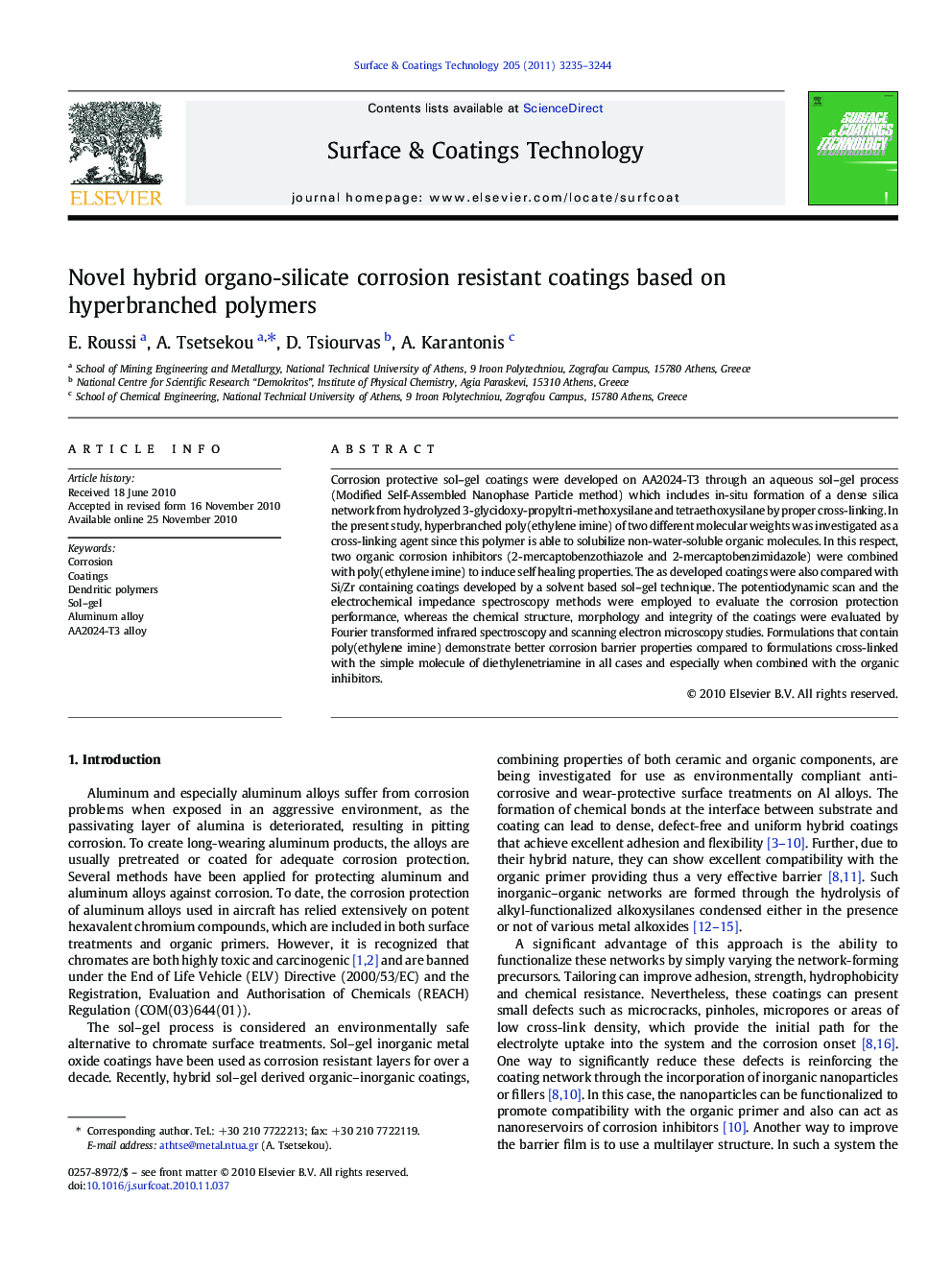| Article ID | Journal | Published Year | Pages | File Type |
|---|---|---|---|---|
| 1659449 | Surface and Coatings Technology | 2011 | 10 Pages |
Corrosion protective sol–gel coatings were developed on AA2024-T3 through an aqueous sol–gel process (Modified Self-Assembled Nanophase Particle method) which includes in-situ formation of a dense silica network from hydrolyzed 3-glycidoxy-propyltri-methoxysilane and tetraethoxysilane by proper cross-linking. In the present study, hyperbranched poly(ethylene imine) of two different molecular weights was investigated as a cross-linking agent since this polymer is able to solubilize non-water-soluble organic molecules. In this respect, two organic corrosion inhibitors (2-mercaptobenzothiazole and 2-mercaptobenzimidazole) were combined with poly(ethylene imine) to induce self healing properties. The as developed coatings were also compared with Si/Zr containing coatings developed by a solvent based sol–gel technique. The potentiodynamic scan and the electrochemical impedance spectroscopy methods were employed to evaluate the corrosion protection performance, whereas the chemical structure, morphology and integrity of the coatings were evaluated by Fourier transformed infrared spectroscopy and scanning electron microscopy studies. Formulations that contain poly(ethylene imine) demonstrate better corrosion barrier properties compared to formulations cross-linked with the simple molecule of diethylenetriamine in all cases and especially when combined with the organic inhibitors.
Research Highlights► Sol–gel derived organo-silicate cross-linked hybrid anti-corrosive films were prepared. ► Poly(ethylene imine) was used as a cross-linker together with corrosion inhibitors. ► The cross-linked film obtained is stably attached on Al alloy through strong binding. ► The coatings present very good corrosion protection properties.
